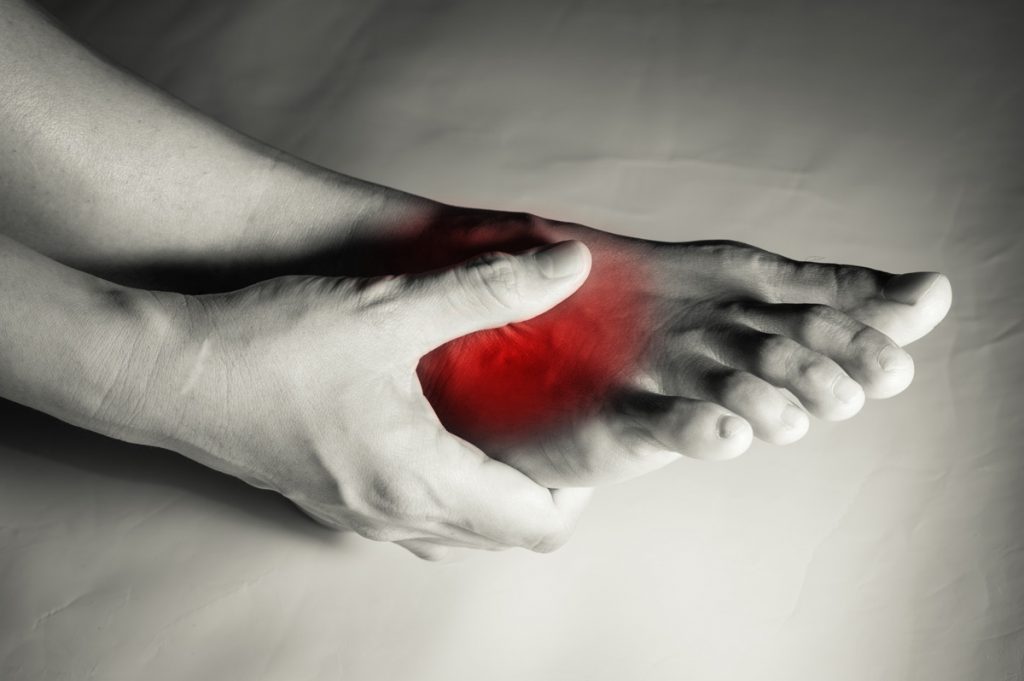

Wearing tattered shoes provides no protection, and runners should replace their footwear before exceeding 500 miles of usage. Make sure to acquire suitable arch supports and inserts if necessary, and that your shoes are shock absorbent and in good condition. Stretch and strengthen important muscles in your feet, ankles and legs in order to guard against future strain. Applying ice to the affected area should assist in reducing pain and swelling. To maintain fitness, alter your training program temporarily to be focused on low-impact sports like swimming. If pain is severe you should refrain from running activities until it subsides to avoid risking an aggravation of the injury. These supports should lessen your symptoms within days. A specialist can recommend the inserts suitable to your needs, which will depend on the shape of your arches. This counteracts the strain placed on the arches by biomechanical errors, causing them to cease stretching excessively. Generally arch pain is easy to treat, with the most effective method of treatment being the placement of arch supports in the shoes. If revealed to be plantar fasciitis, please refer to our article on that injury for further information. TreatmentĬonsult a doctor to diagnose the condition and determine the cause. You are also particularly at risk if in your 40s or 50s and commencing an intense program of training after a long period of inactivity. Other causes include overstretching or otherwise pressuring the arches, for example by exercising with fatigued leg muscles which leave the feet with excessive work to do. Too much of this strain can lead to stretching of the plantar fascia and pain in the arches. If by contrast you have high arches (instep), the ankle can roll outwards, again causing undue strain on the arches. This places inordinate pressure on the plantar fascia and arches. This thick band of connective tissue travels across the bottom of the foot between the toes and the. With flat feet (or overpronation) the arches appear to be almost flattened, causing unevenness by forcing the feet roll inwards in order to maintain balance and support the body's weight. Plantar fasciitis is an irritation of the plantar fascia.

The most prominent biomechanical difficulties are flat feet and high arches. This can arise due to faulty biomechanics in your feet, which alone can also provoke foot arch pains. Plantar fasciitis, another sports injury detailed on this website, is regularly the cause of foot arch pain or strain. If the pain is caused by the plantar fascia, it is likely to be considerably more severe in the mornings due to the muscles being unused. This can be accompanied by inflammation and tenderness. The primary symptom is pain or aching in the arch area. The pain can also highlight underlying issues to do with the structure of your arches. Cavus Foot.Pain or strain in your foot arches is a common sports injury and often linked to inflammation of the plantar fascia, the shock absorption ligament along the bottom of each foot. Prevalence of flexible flat foot in adults: a cross-sectional study. doi:10.1186/1757-Īenumulapalli A, Kulkarni MM, Gandotra AR.

#Pain in arch of foot manual#
The effectiveness of manual stretching in the treatment of plantar heel pain: a systematic review. Sweeting D, Parish B, Hooper L, Chester R. Tendonitis and tendinopathy: What are they and how do they evolve?. Diagnosis, treatment, and rehabilitation of stress fractures in the lower extremity in runners. Kahanov L, Eberman LE, Games KE, Wasik M.


 0 kommentar(er)
0 kommentar(er)
